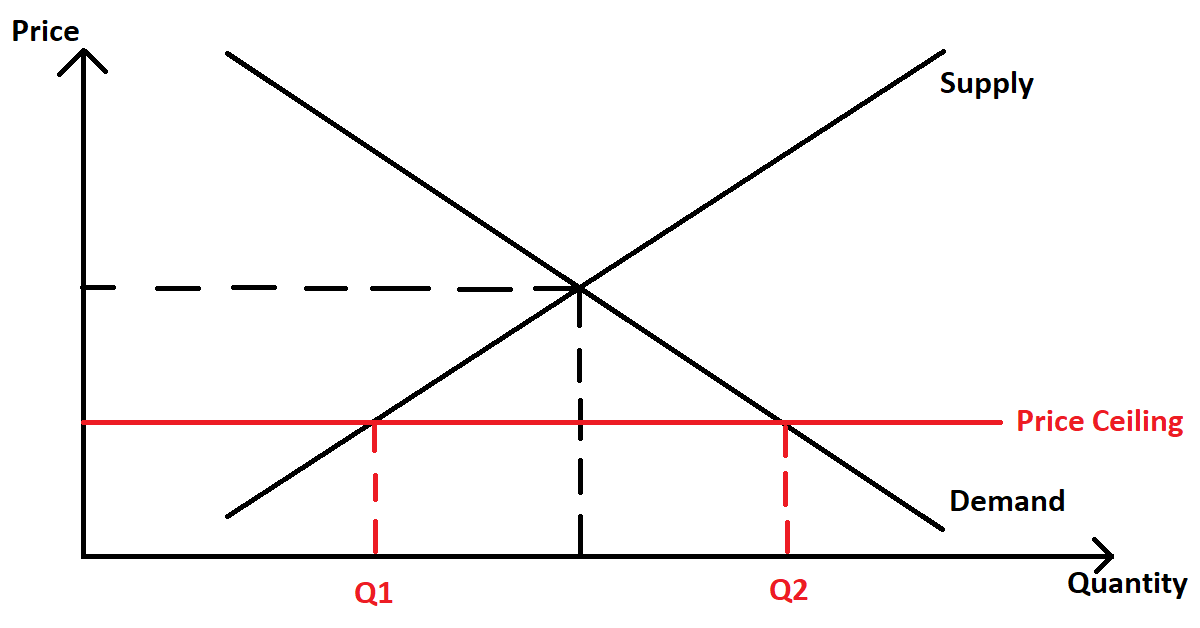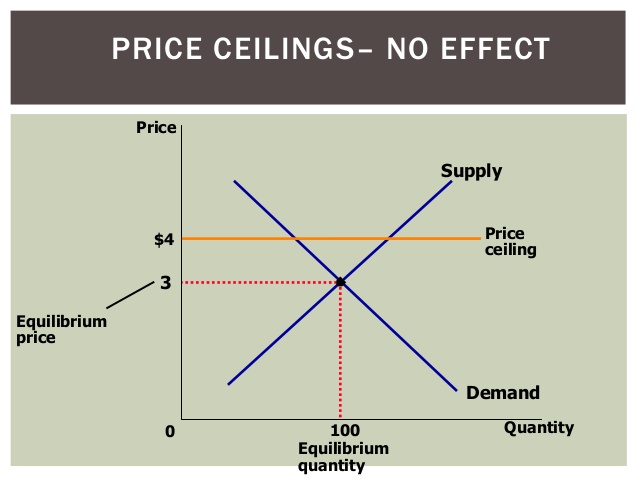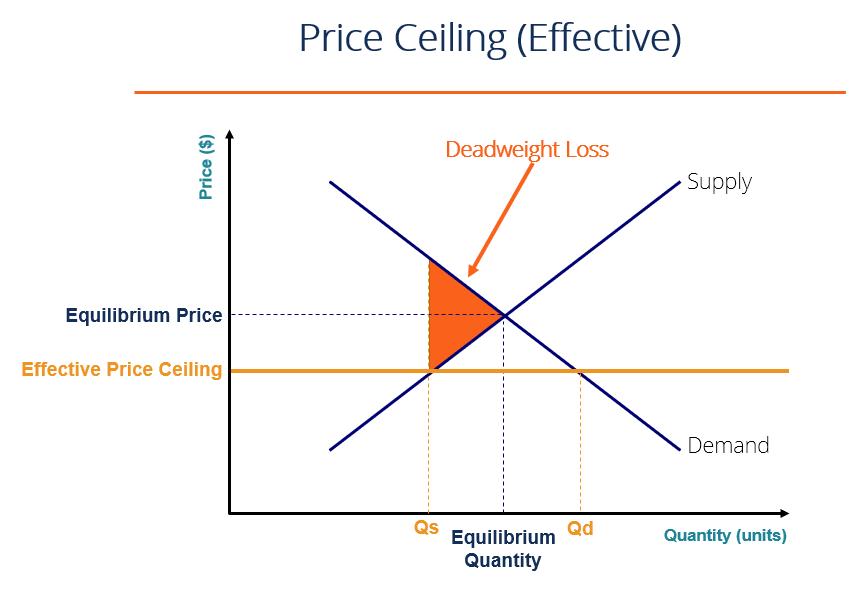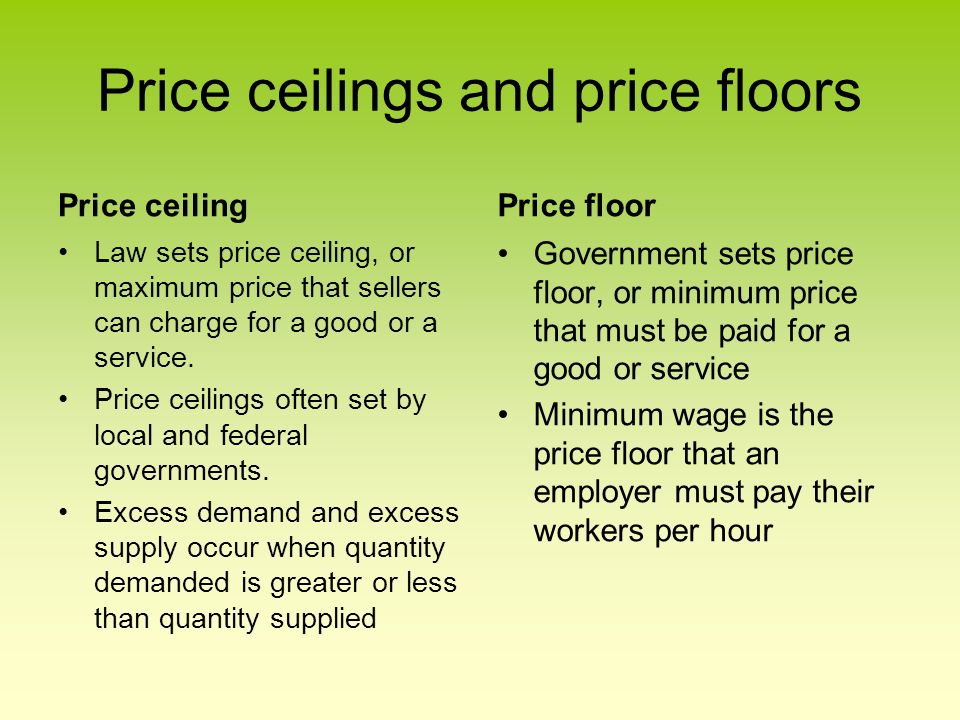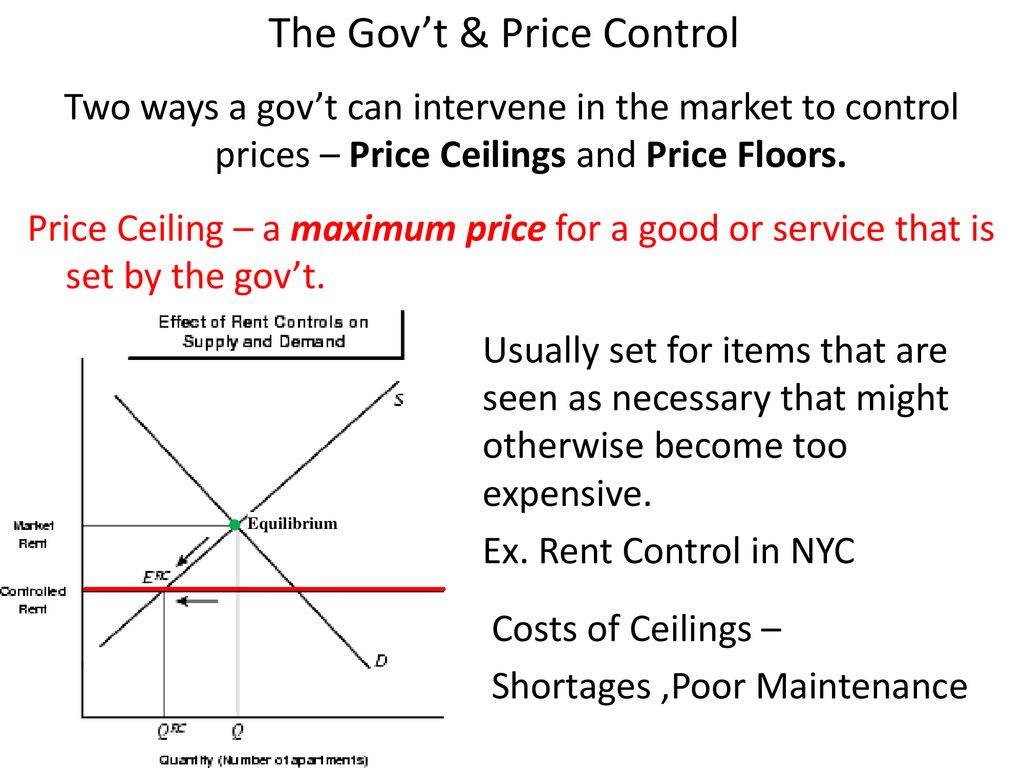Pros And Cons Of Price Ceiling
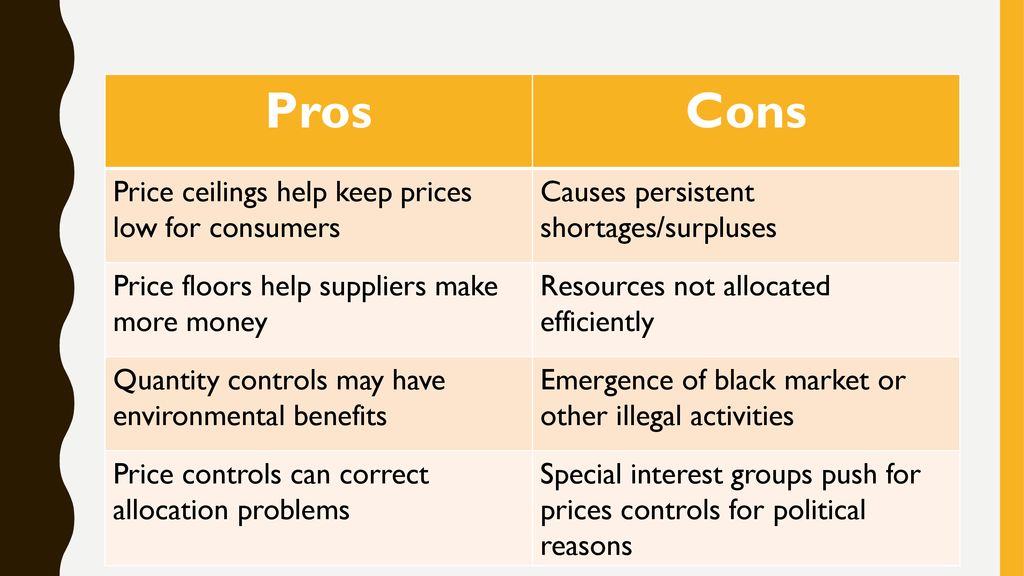
The specter of soaring prices, particularly for essential goods like food and housing, has once again thrust the debate surrounding price ceilings into the limelight. As inflation continues to bite, policymakers and economists are grappling with the potential benefits and inherent risks of government intervention in market prices. The allure of immediate relief for struggling consumers clashes with the potential for unintended consequences that can exacerbate the very problems they seek to solve.
Price ceilings, government-imposed maximum prices below the market equilibrium, are designed to protect consumers from exorbitant costs, especially during times of crisis or when essential goods become unaffordable. This article delves into the complex world of price ceilings, examining their potential advantages, disadvantages, and real-world impacts, drawing on economic analysis and historical examples. It explores the nuances of this policy tool, weighing the short-term gains against the long-term economic repercussions, and providing a balanced perspective on its effectiveness and suitability in various market conditions.
Potential Benefits of Price Ceilings
The primary motivation behind implementing a price ceiling is to make essential goods or services more accessible to a larger segment of the population. By artificially lowering prices, governments aim to prevent price gouging and ensure that low-income individuals and families can afford basic necessities like food, rent, or medicine. This is particularly relevant during periods of economic hardship, natural disasters, or when monopolistic practices drive prices unreasonably high.
Price ceilings can act as a safety net, preventing vulnerable populations from being priced out of the market for essential goods. This can have a positive impact on public health, social stability, and overall well-being. For example, rent control, a form of price ceiling on rental housing, is often advocated as a way to combat homelessness and prevent displacement in rapidly gentrifying urban areas.
Furthermore, supporters argue that price ceilings can redistribute wealth, albeit in a limited way. By capping the profits of producers or landlords, some of the surplus is transferred to consumers in the form of lower prices. This can be seen as a tool to address income inequality and promote social justice.
The Dark Side: Drawbacks and Unintended Consequences
While the intention behind price ceilings may be noble, their implementation often leads to a host of unintended consequences. The most immediate and predictable effect is a shortage. When the price is artificially lowered below the market equilibrium, the quantity demanded exceeds the quantity supplied.
This shortage can manifest in various ways, including long waiting lists, empty shelves, and the emergence of black markets. Consumers may have to spend hours searching for scarce goods, and those with connections or the willingness to pay bribes may have preferential access. This creates an unfair and inefficient allocation of resources.
Producers, facing reduced profits, have little incentive to increase production or invest in improving the quality of their goods or services. In some cases, they may even reduce production or exit the market altogether, further exacerbating the shortage. This can lead to a decline in the overall quality and availability of the controlled goods.
Rent Control: A Case Study in Unintended Consequences
Rent control, a common form of price ceiling, often illustrates the potential pitfalls of this policy. While intended to make housing more affordable, studies have shown that it can lead to a decline in the quality of rental units, a reduction in the supply of affordable housing, and increased discrimination against certain groups of renters.
Landlords, unable to charge market rents, may neglect maintenance and repairs, leading to the deterioration of existing housing stock. They may also convert rental units to other uses, such as condominiums, further reducing the supply of affordable housing. New construction of rental housing may also be discouraged, as developers are less willing to invest in projects with limited profit potential.
Moreover, rent control can create a situation where long-term tenants benefit at the expense of new renters. Those who have been in their apartments for many years may pay significantly lower rents than those who are just entering the market, creating inequities and potentially hindering mobility.
Economic Perspectives and Evidence
Economists generally view price ceilings with skepticism, citing their potential for creating shortages, inefficiencies, and unintended consequences. Mainstream economic theory suggests that market prices, while not always perfect, are generally the most efficient way to allocate resources. Artificially interfering with these prices can disrupt market signals and lead to suboptimal outcomes.
Numerous studies have examined the effects of price ceilings in various contexts, and the findings are often consistent with economic theory. For example, research on rent control in cities like New York and San Francisco has documented the negative impacts on housing supply, quality, and affordability. A study by the Stanford Institute for Economic Policy Research (SIEPR) found that rent control in San Francisco led to a 15% reduction in the city's rental housing supply.
However, some economists argue that under certain specific conditions, price ceilings can be justified. For instance, if a market is dominated by a monopoly or oligopoly, and competition is limited, a price ceiling may be necessary to prevent exploitation of consumers. Similarly, during times of extreme crisis, such as a natural disaster or a global pandemic, temporary price controls may be warranted to prevent price gouging and ensure access to essential goods.
Alternative Solutions and Policy Recommendations
Given the potential drawbacks of price ceilings, many economists and policymakers advocate for alternative solutions that address the underlying causes of affordability problems. These solutions often focus on increasing supply, promoting competition, and providing targeted assistance to low-income individuals and families.
For example, to address housing affordability issues, policies that encourage new construction, streamline zoning regulations, and reduce bureaucratic barriers to development are often recommended. These measures can increase the supply of housing and lower prices in the long run. Similarly, policies that promote competition in industries dominated by a few firms can help to prevent excessive pricing.
Targeted assistance programs, such as rental subsidies or food stamps, can provide direct support to low-income individuals and families without distorting market prices. These programs can ensure that vulnerable populations have access to essential goods and services without creating the negative consequences associated with price ceilings.
Conclusion: A Cautious Approach to Price Controls
Price ceilings, while seemingly a straightforward solution to affordability problems, are a complex policy tool with significant potential for unintended consequences. While they may offer short-term relief to some consumers, they often lead to shortages, inefficiencies, and a decline in the quality of goods and services. Policymakers should approach price controls with caution, carefully weighing the potential benefits against the risks.
A more sustainable approach to addressing affordability challenges involves policies that increase supply, promote competition, and provide targeted assistance to vulnerable populations. These measures, while often more complex and politically challenging to implement, are more likely to lead to long-term improvements in affordability and economic well-being. The focus should be on creating a market environment where prices are determined by supply and demand, rather than artificial government intervention.
Ultimately, the effectiveness of any policy intervention depends on a thorough understanding of the specific market conditions and a careful consideration of the potential consequences. A nuanced and evidence-based approach is essential to avoid unintended harm and achieve the desired outcomes of affordability and accessibility for all.
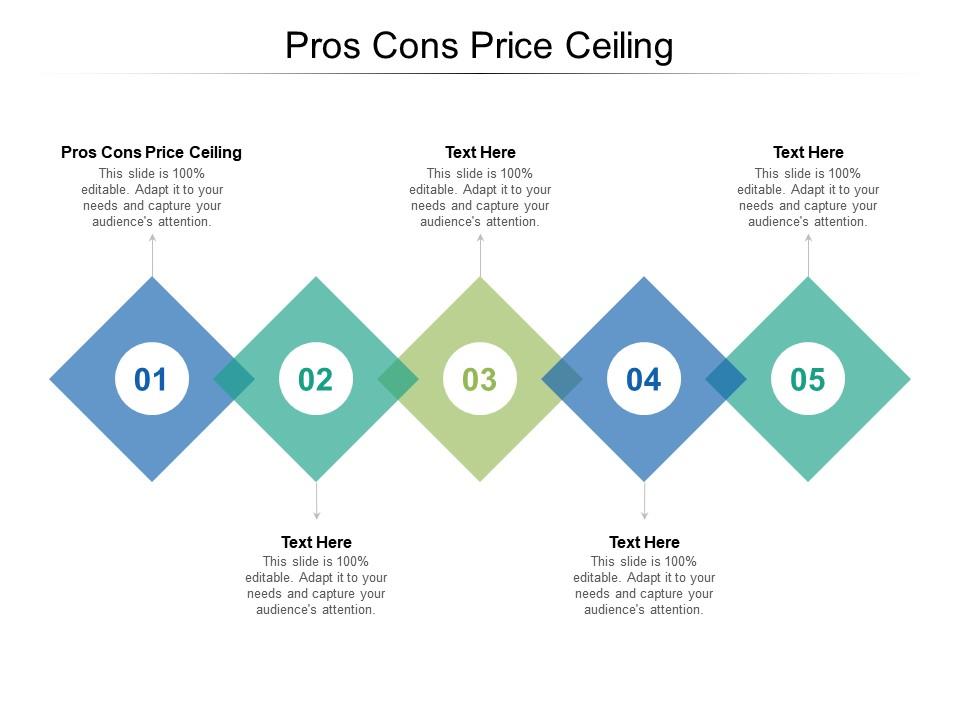



:max_bytes(150000):strip_icc()/PriceCeiling_Final_4191001-c9c1ee8adf954a03b23c609cc5067d0f.jpg)

